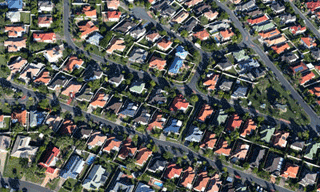Quote Of The Week
“Investors are clearly feeling like they have lost control of their real estate assets but seemingly they still don’t deserve a seat at the table, even though they provide the majority of rental accommodation around the nation.”
PIPA Chair Nicola McDougall
Budget Plan For A Million Homes
 The private sector will be encouraged to work alongside all levels of government to help deliver on the Federal Government’s national housing “accord,” which is designed to deliver a million new homes in five years from 2024.
The private sector will be encouraged to work alongside all levels of government to help deliver on the Federal Government’s national housing “accord,” which is designed to deliver a million new homes in five years from 2024.
Treasurer Jim Chalmers says all levels of government will work with institutional investors and the construction sector, to help address chronic shortages of supply.
He says the government will also provide $350 million in additional federal funding to deliver 10,000 affordable homes over five years from 2024.
Under the accord, the states and territories will be tasked with fast tracking zoning, planning and land release for social and affordable housing.
“The accord recognises most of this supply needs to come from the market with government playing a key role in enabling and kick-starting investment,” Chalmers says.
The new Treasurer’s Investor Roundtable will also explore further ways to promote investment in housing, bringing together leaders from the investment community, superannuation funds, the major banks and global asset managers.
Super Funds Urged To Fund Housing
 The $3.3 trillion superannuation industry and institutional investors are being encouraged to direct more money into residential housing, with funding for the push included in the Federal Budget.
The $3.3 trillion superannuation industry and institutional investors are being encouraged to direct more money into residential housing, with funding for the push included in the Federal Budget.
More resources will be allocated through Treasury and financial regulators to help resolve regulatory barriers for super funds and other institutional investors to invest more in housing.
Super funds and other institutional investors already invest billions of dollars in commercial real estate but have relatively little exposure to the residential housing sector.
In September the Federal Government announced it will make up to $575 million from the National Housing Infrastructure Facility (NHIF) available for investment in affordable housing, as part of a plan to lure the super sector into social housing investment.
The NHIF is a $1 billion facility that offers loans, grants and equity finance for “housing-enabling infrastructure” such as utilities and roads.
The superfund sector says it needs a Federal Government “top-up” to invest in affordable housing as it delivers lower rental yields.
Clearances Continue To Rise
 Auction clearance rates have exceeded 60% for the third consecutive week despite the dampener of widespread wet weather and flooding, and a major increase in auction volumes.
Auction clearance rates have exceeded 60% for the third consecutive week despite the dampener of widespread wet weather and flooding, and a major increase in auction volumes.
CoreLogic figures show clearance rates rose by 1.3 percentage points to 62.7% across the combined capital cities.
Adelaide had the highest clearance rate last week of 75.3% (up 5.1% on the previous week), followed by Melbourne 64.6%, Sydney 61.6%, the ACT 57.6% and Brisbane 48.6%.
CoreLogic research director Tim Lawless says auction volumes rose strongly last week across the combined capital cities and surpassed the 2,000 mark for only the third time since late June, although listings are still 29% lower than at the same time last year.
“We are still seeing substantially fewer auctions than a year ago which lines up with a broader trend where the number of new listings added to the market remains remarkably low for this time of the year as many prospective vendors stay on the sidelines,” he says.
Affordable Area Prices Still Rising
 Affordable property markets are performing well, with analysis by PropTrack showing outer suburban markets are holding steady.
Affordable property markets are performing well, with analysis by PropTrack showing outer suburban markets are holding steady.
Median prices in south-west and outer south-west Sydney, including the suburbs Liverpool, Wetherill Park and Campbelltown, remain 4% higher than last year, compared with more expensive markets such as the Northern Beaches where the median is down 1%.
Melbourne’s west from Wyndham to Melton remains 3% higher than this time last year with areas in the south-east from Chadstone to Bunyip 2% higher. The more expensive inner south is down by 6%.
Ipswich in Brisbane’s west and Adelaide’s north both remain 20% higher than this time last year, while Perth’s south-west is up 9%.
PropTrack economist Angus Moore says reduced borrowing capacity means some buyers are having to look further afield when buying, particularly those seeking larger properties.
“That means areas where you can find the bigger dwellings, which is mostly going to be outer suburbs, are going to be outperforming,” he says.
Shortage Drives Up Rent Prices
 Rents hit a new record high in the past quarter, according to Domain’s latest rental report.
Rents hit a new record high in the past quarter, according to Domain’s latest rental report.
It shows that combined capital city house rents are up 1.9% in the three months to September with the average price of renting a house now $530 per week.
Unit rents are up 6.5% over the quarter, with the average weekly rent for a unit now $490.
Domain chief of research and economics Dr Nicola Powell says the increases are a result of a “misalignment between supply and demand.”
In good news for investors gross rental yields are continuing to rebound from the lows recorded during the height of the pandemic.
“Gross rental yields for houses and units are also improving and are at their highest point on record, so it’s a good time for investors to enter the Australian rental market, which will help alleviate some supply pressure,” Powell says.
Gross rental yields for houses and units are 3.25% and 4.18% respectively.




